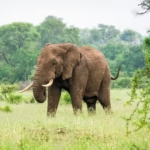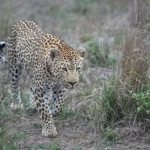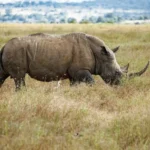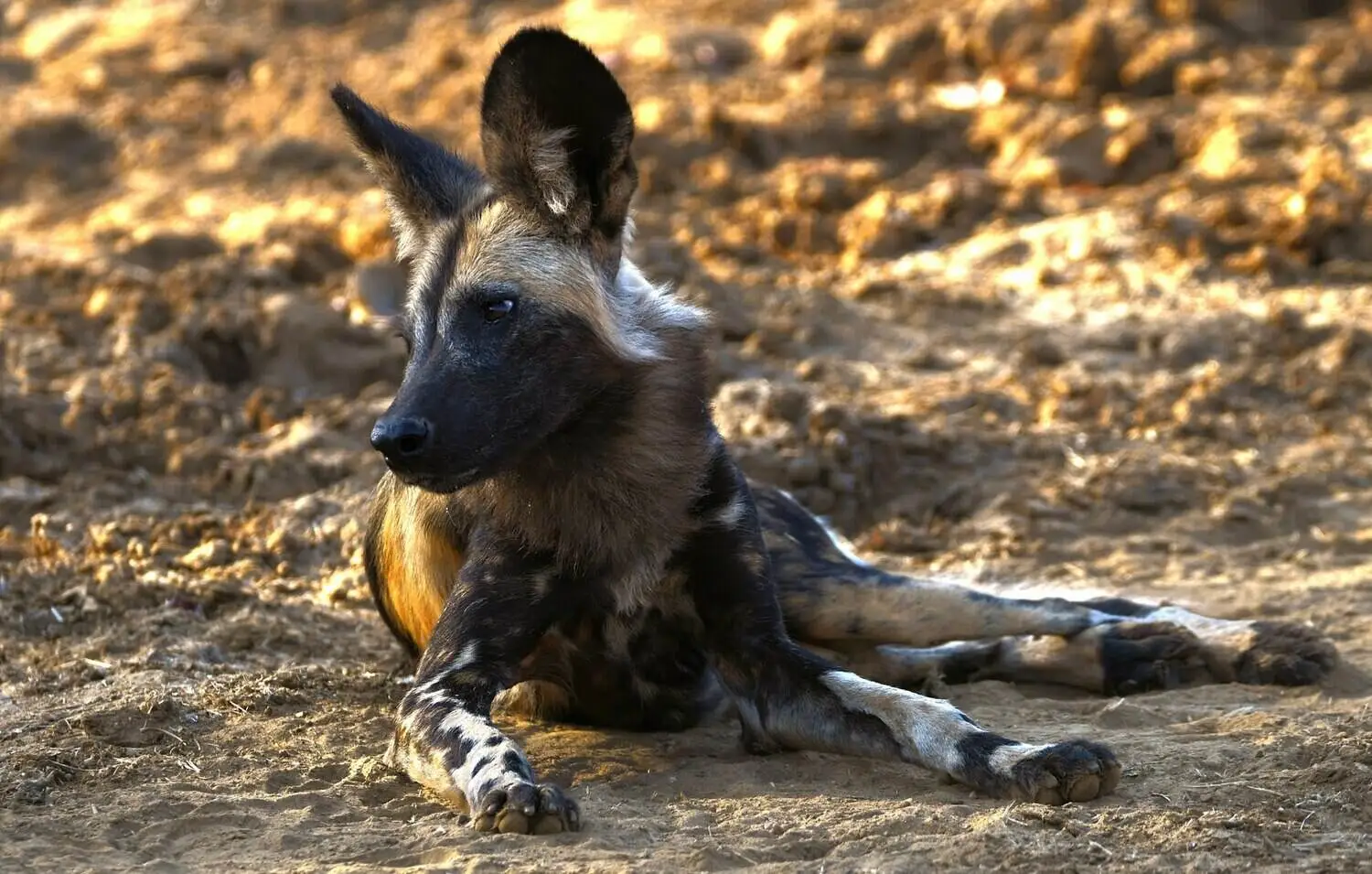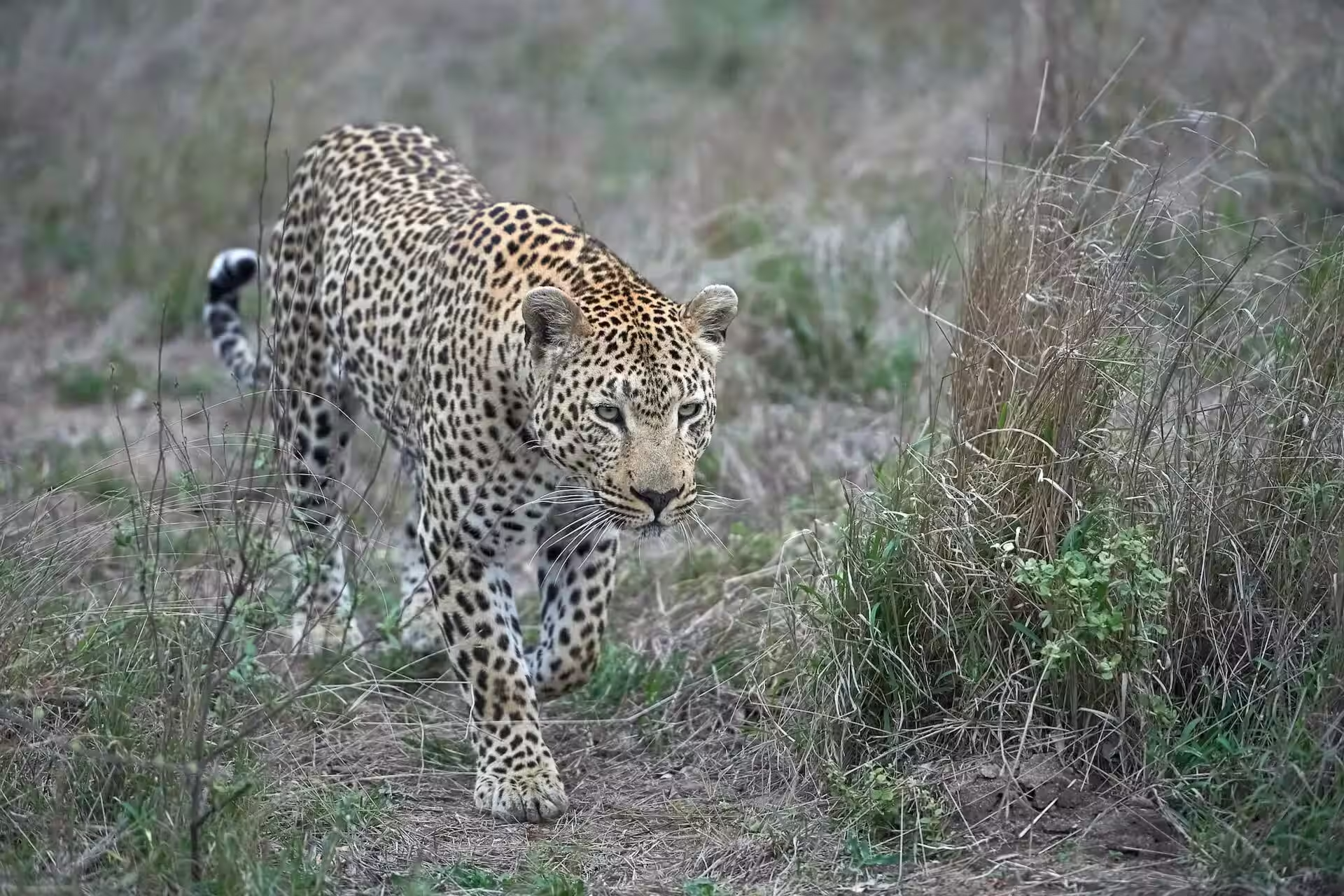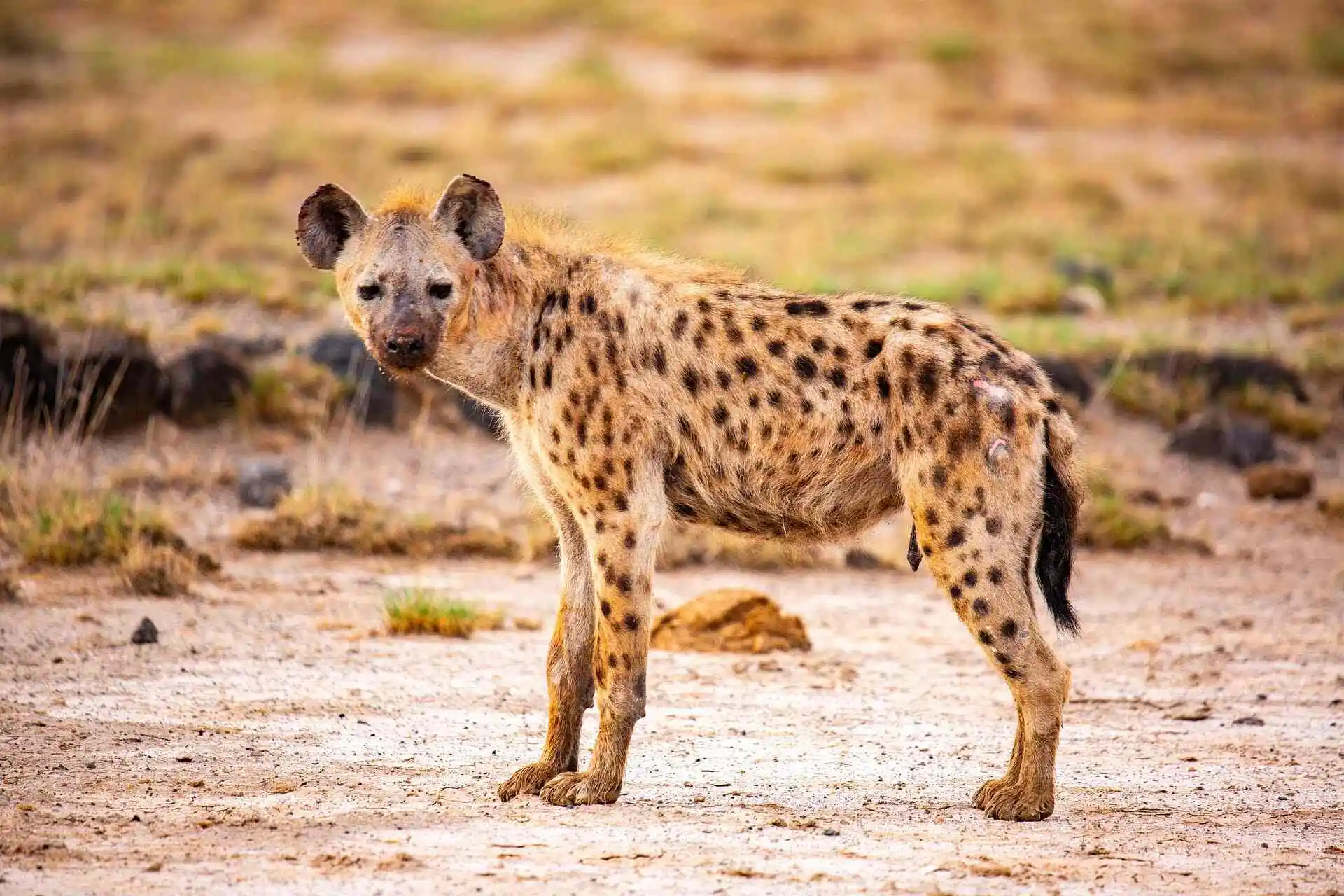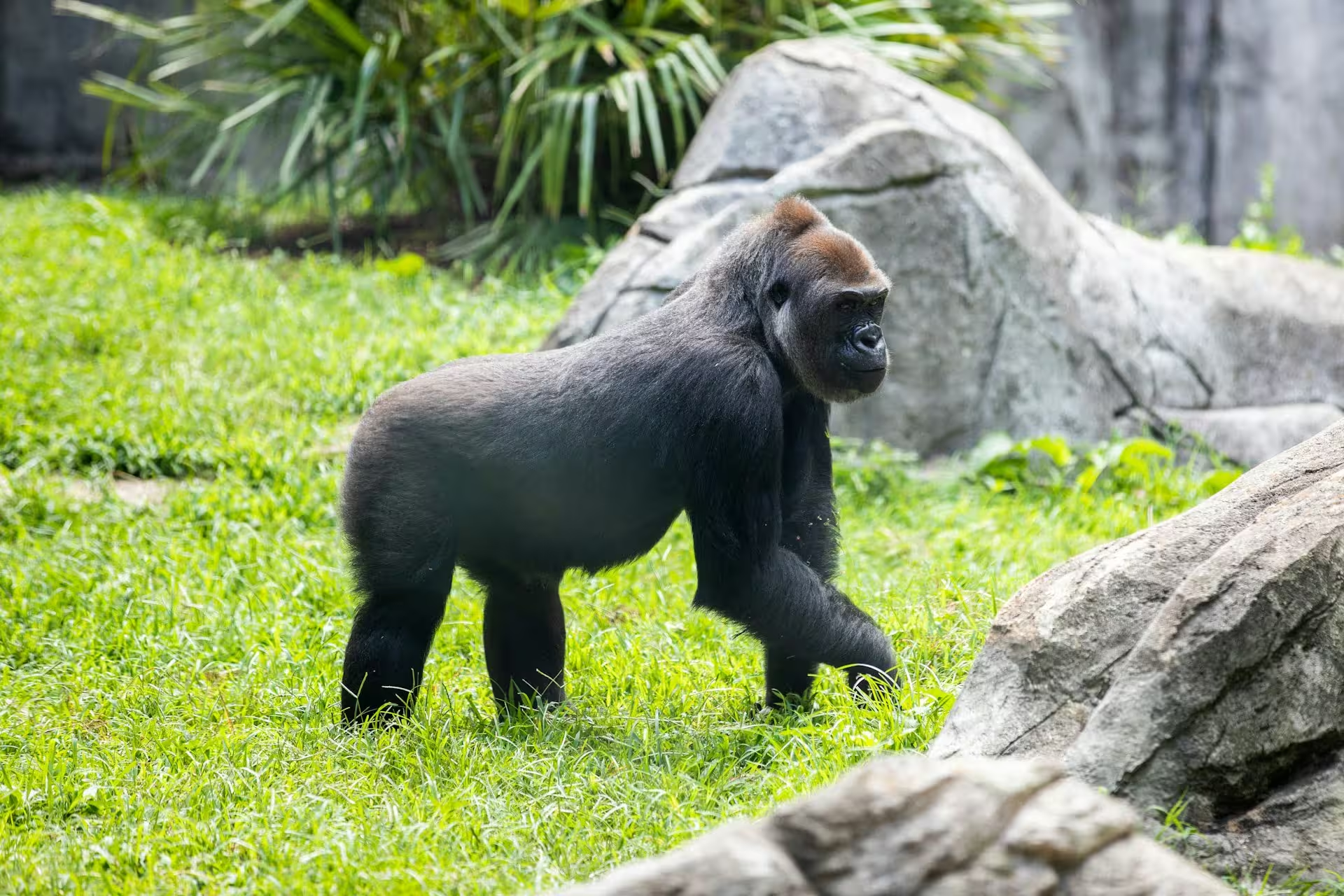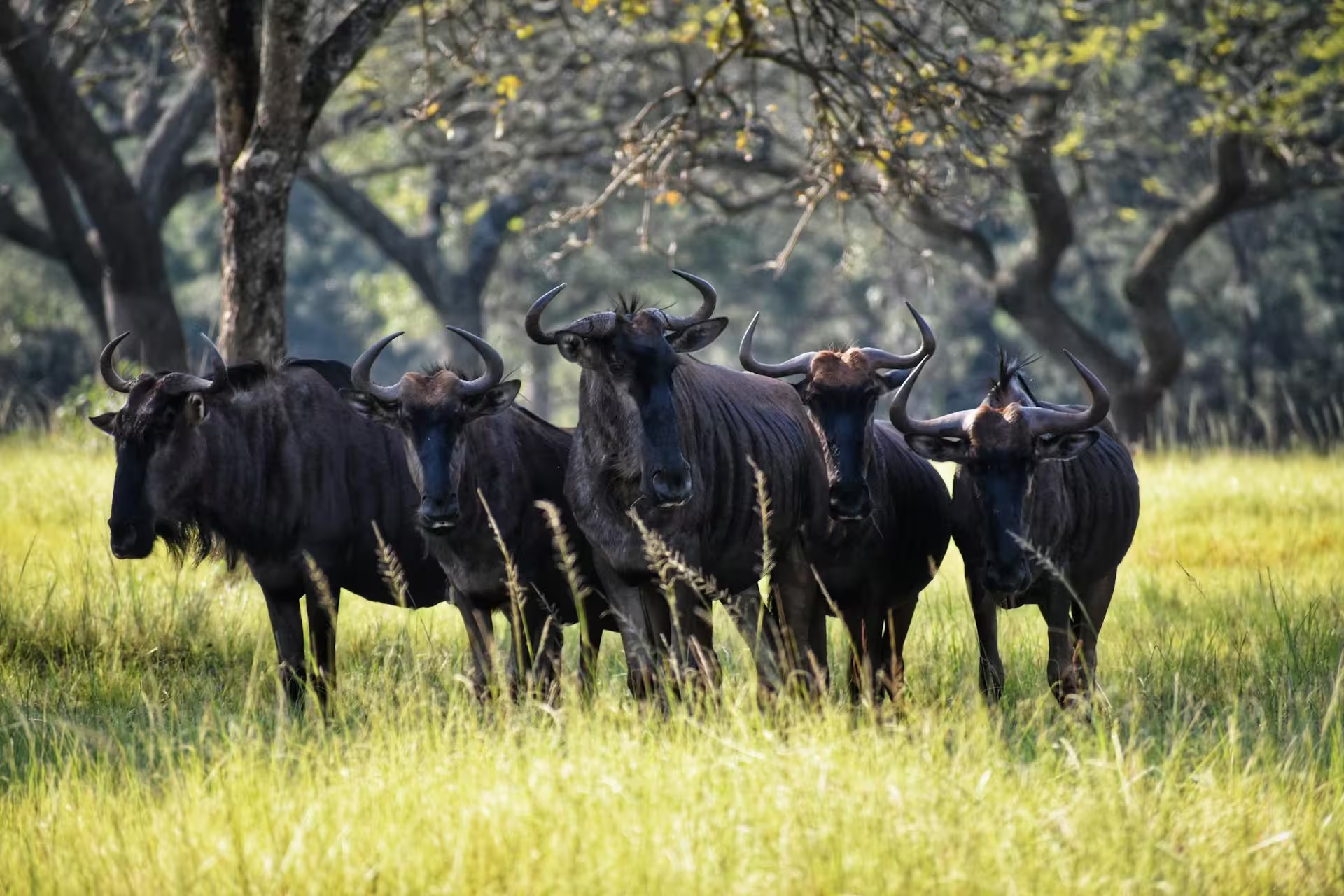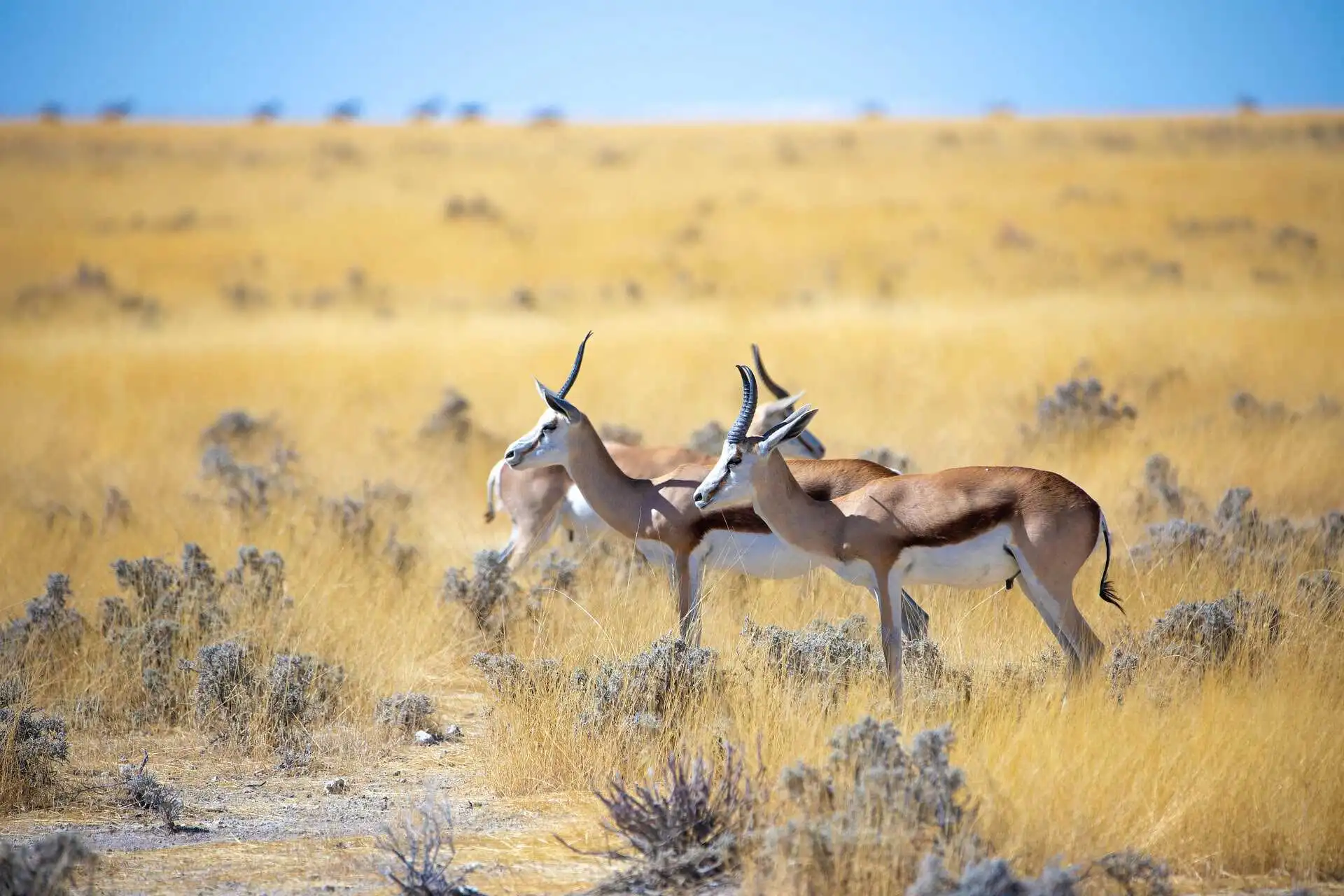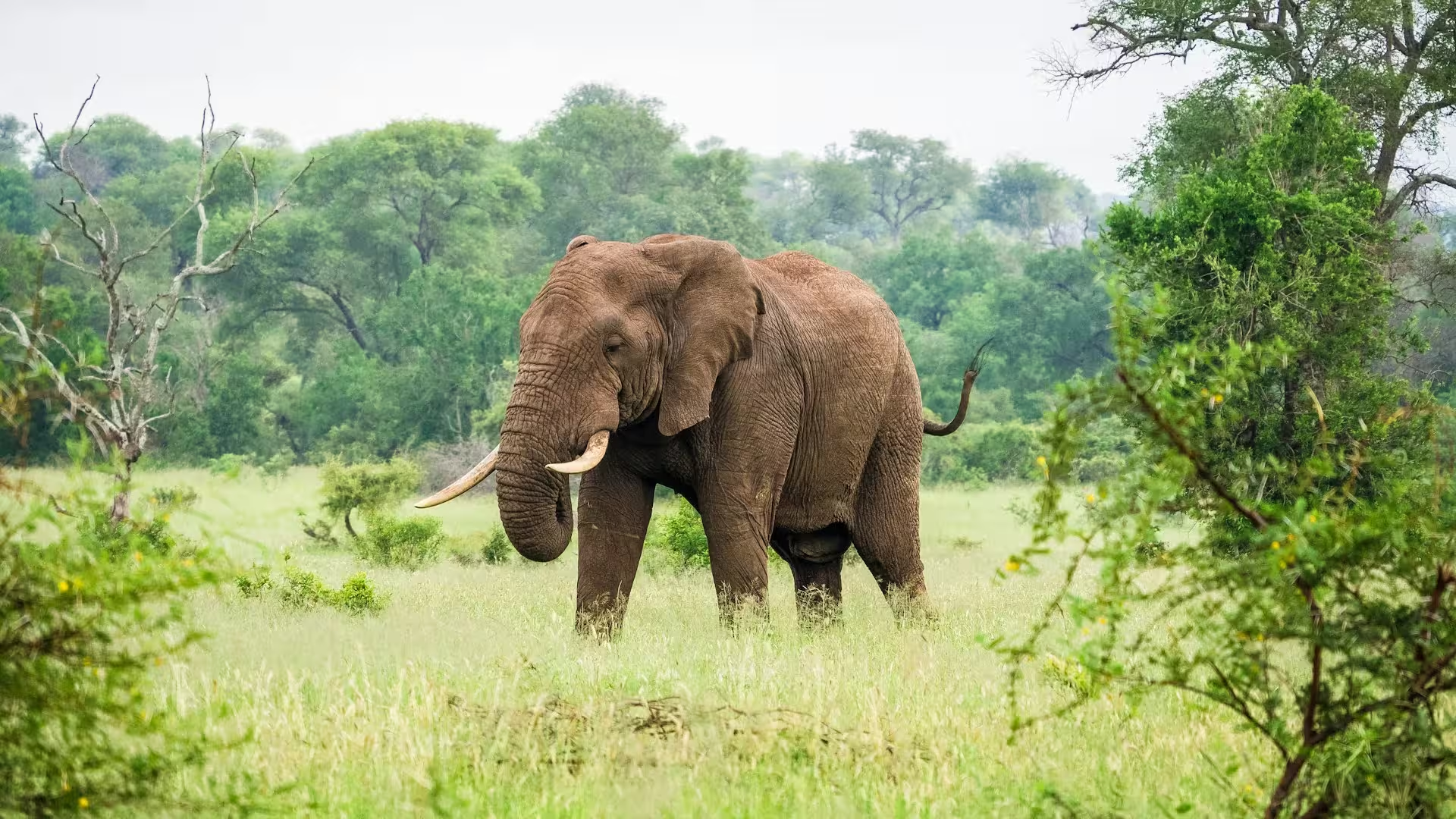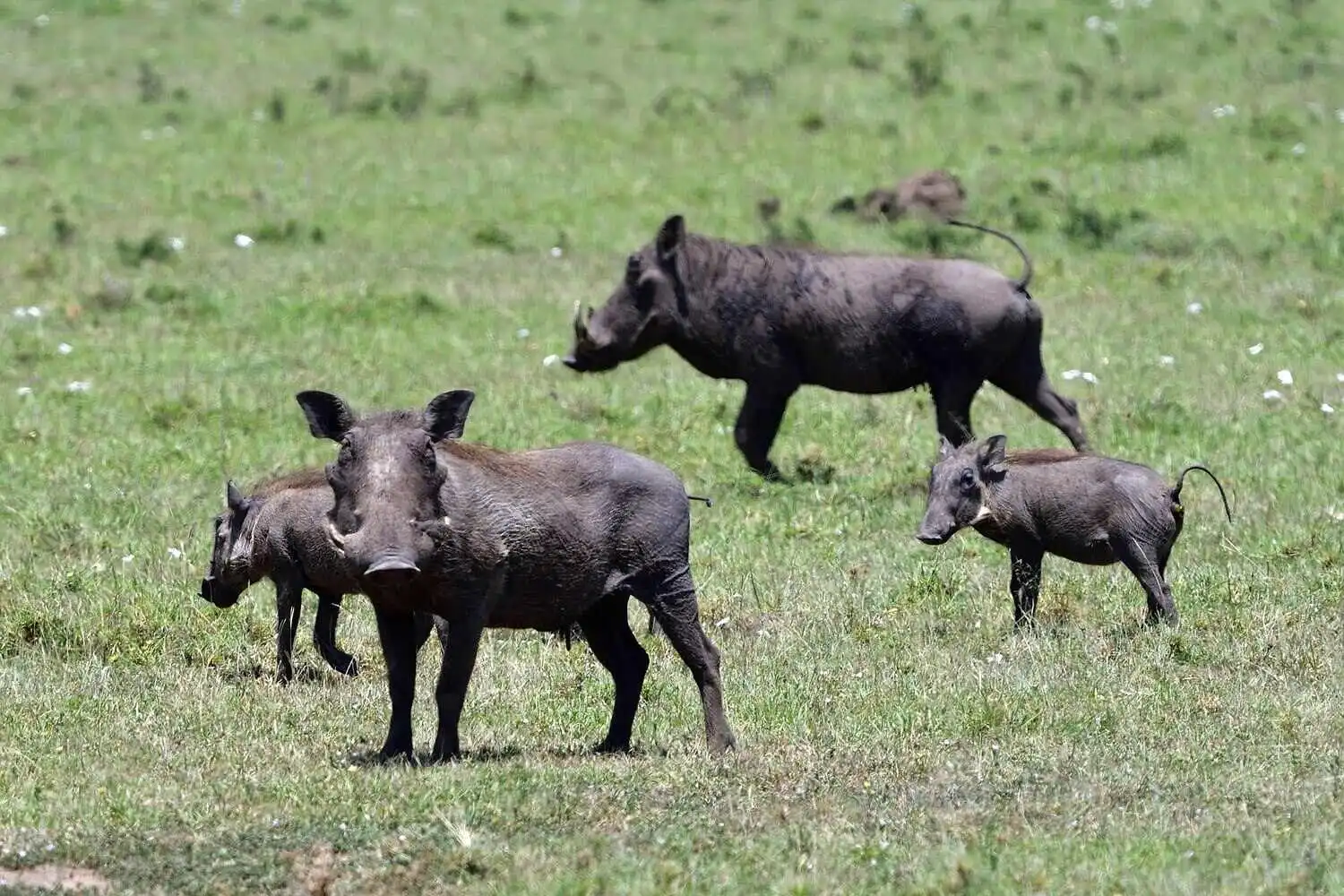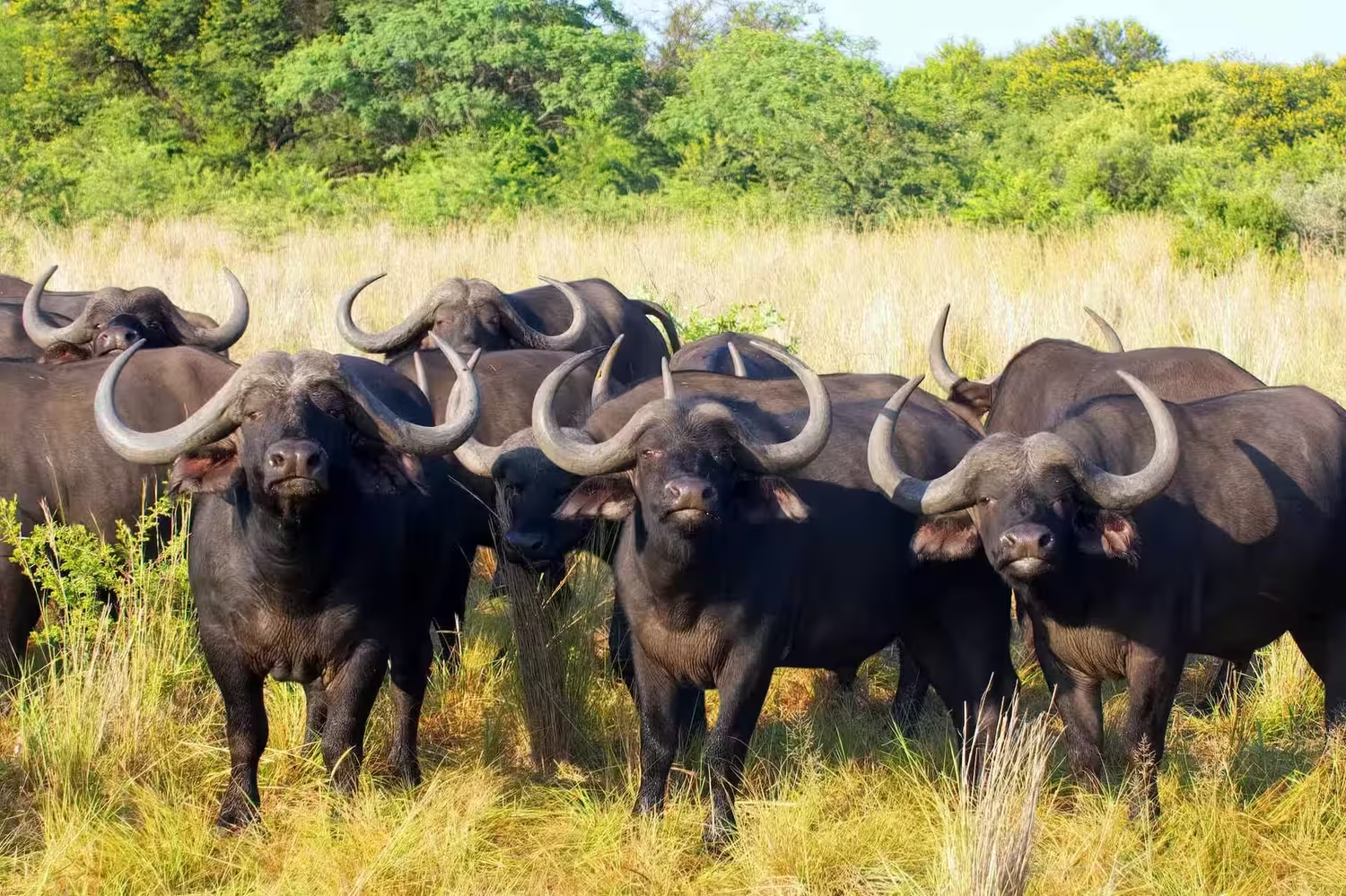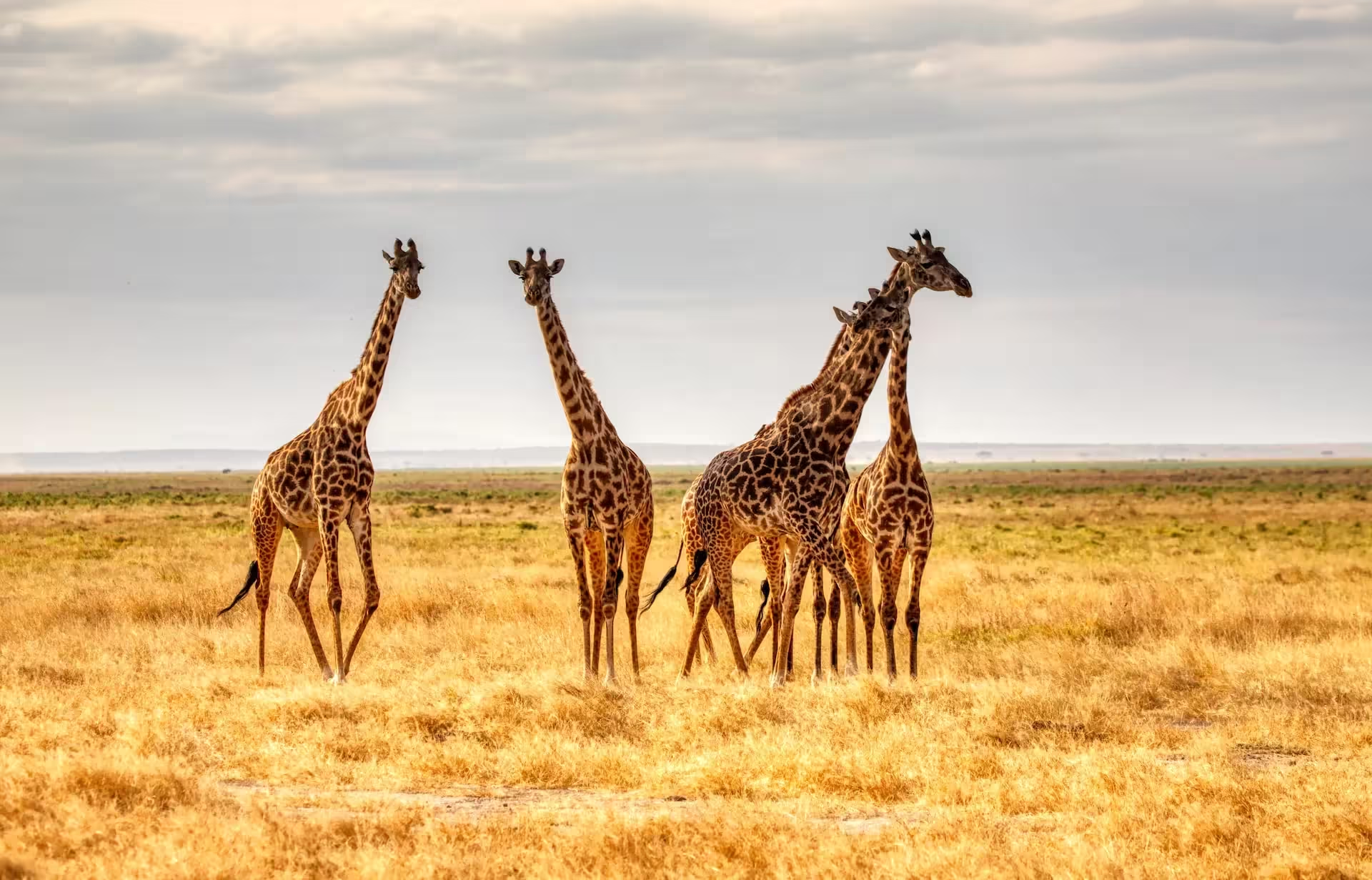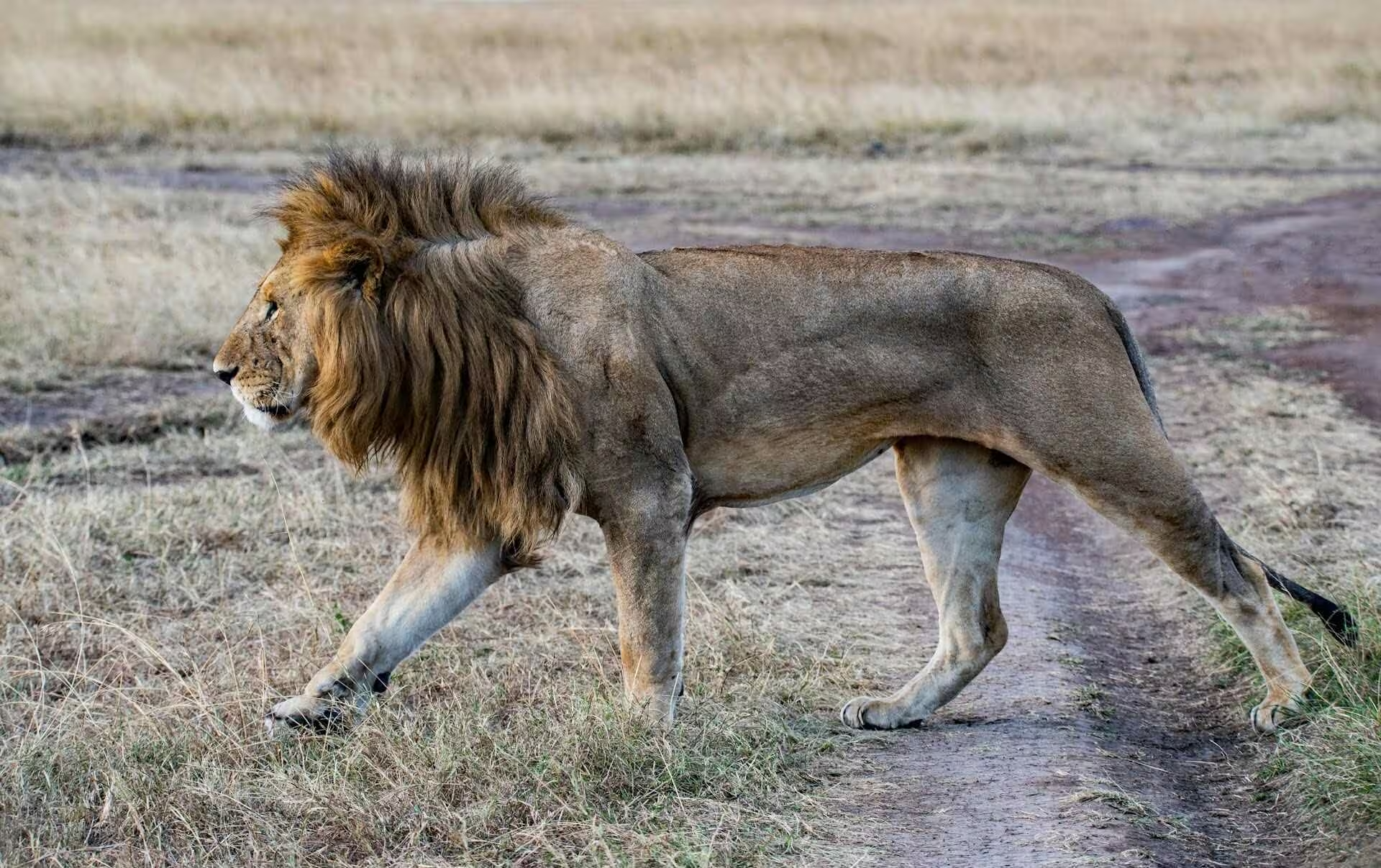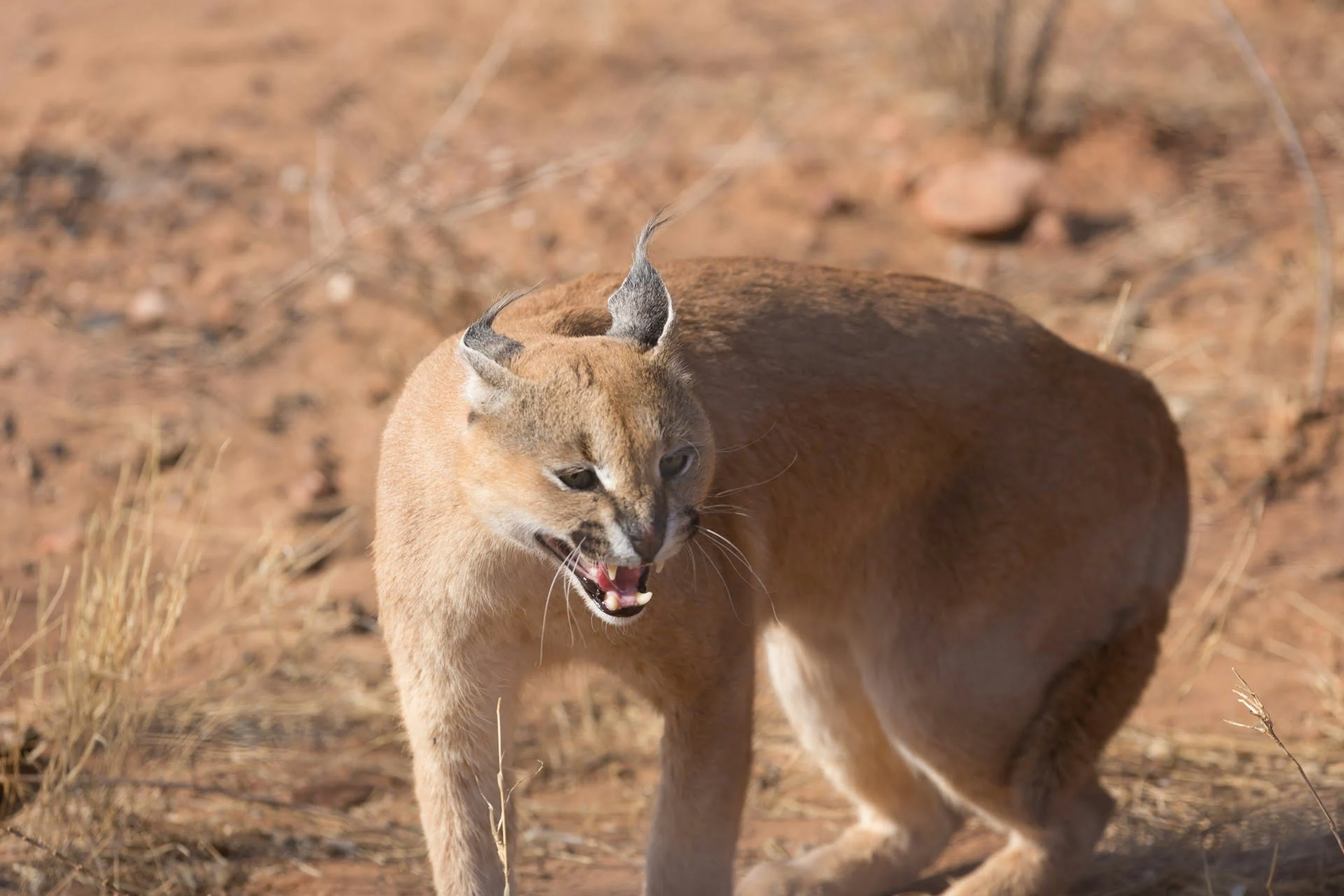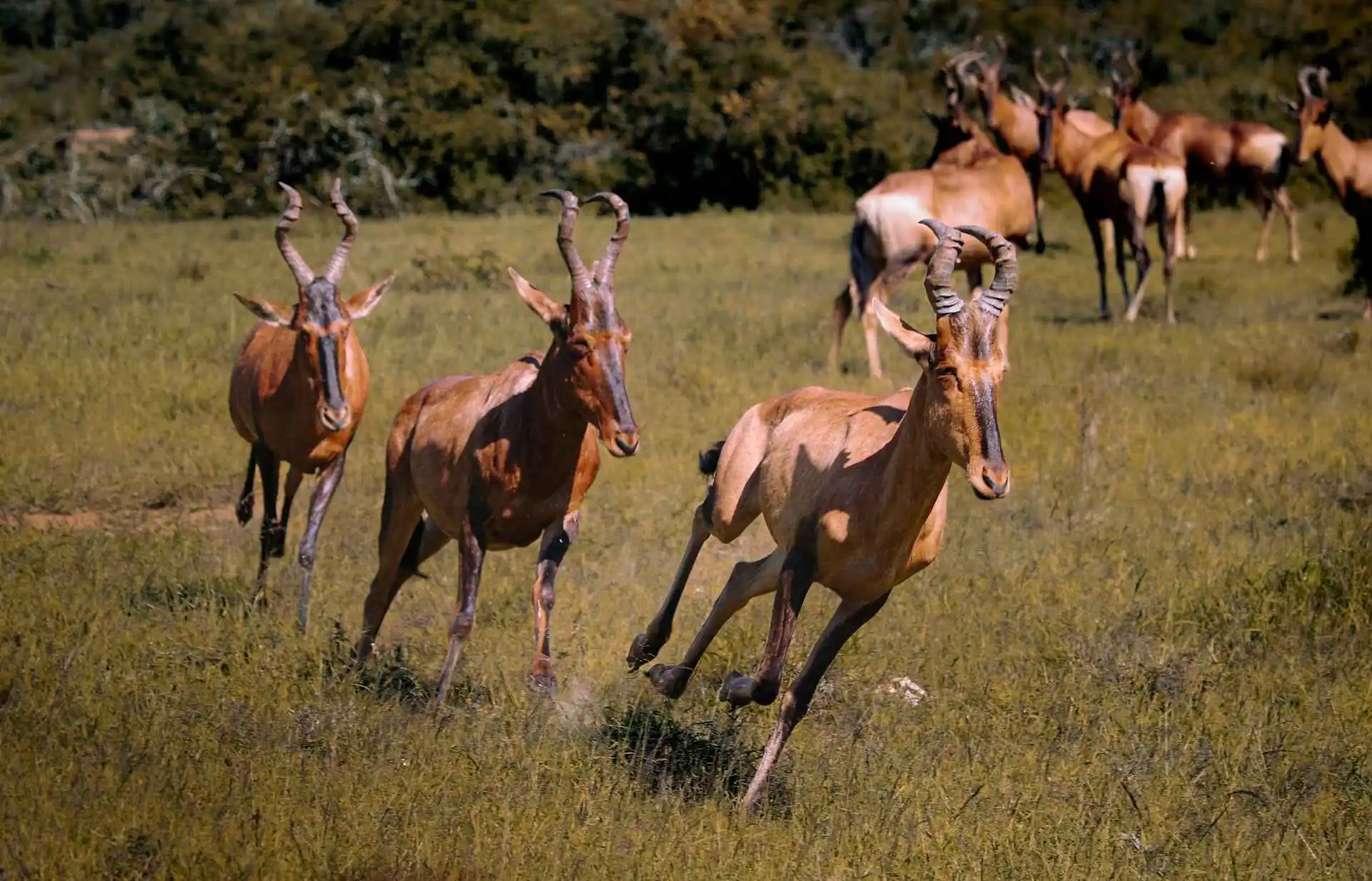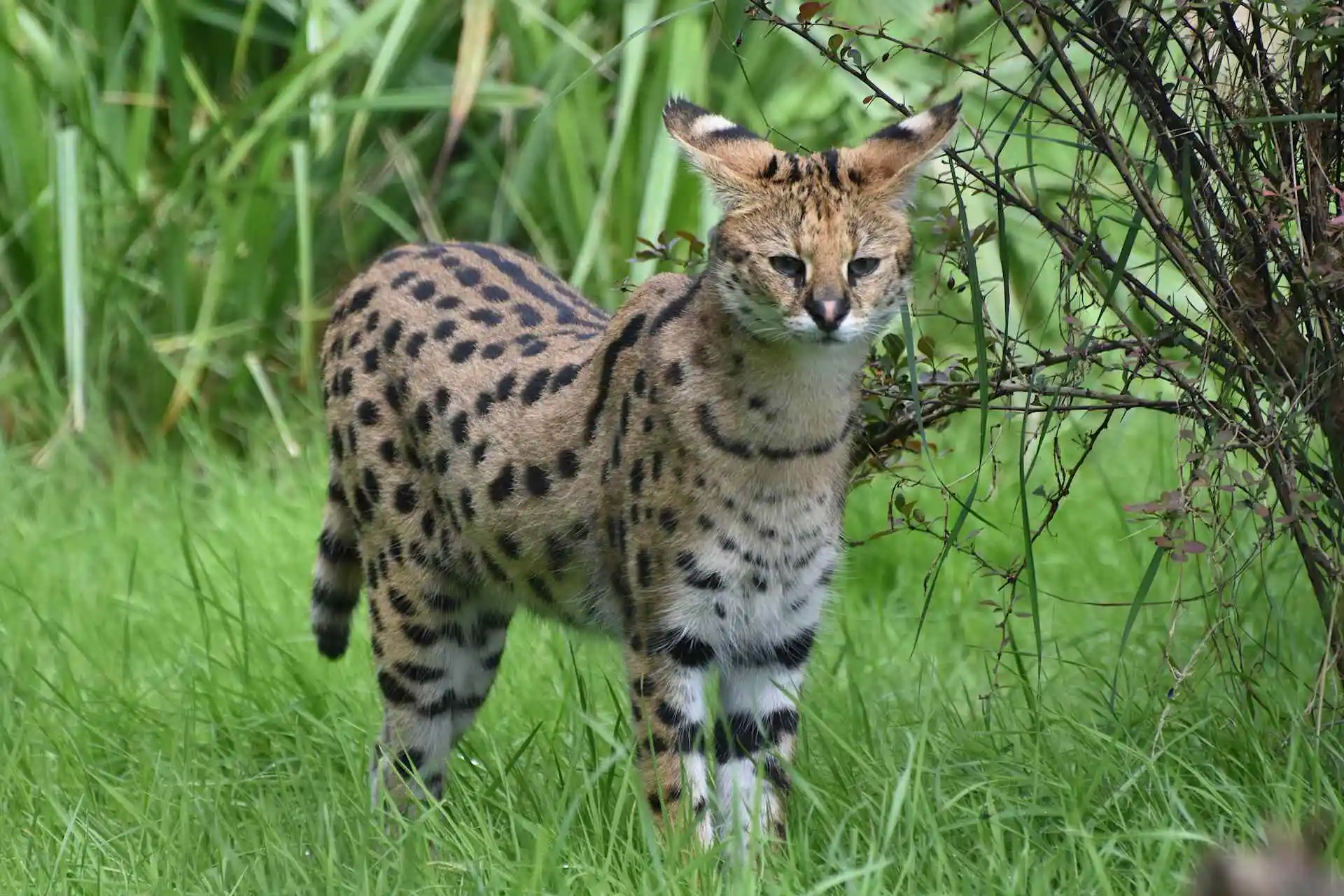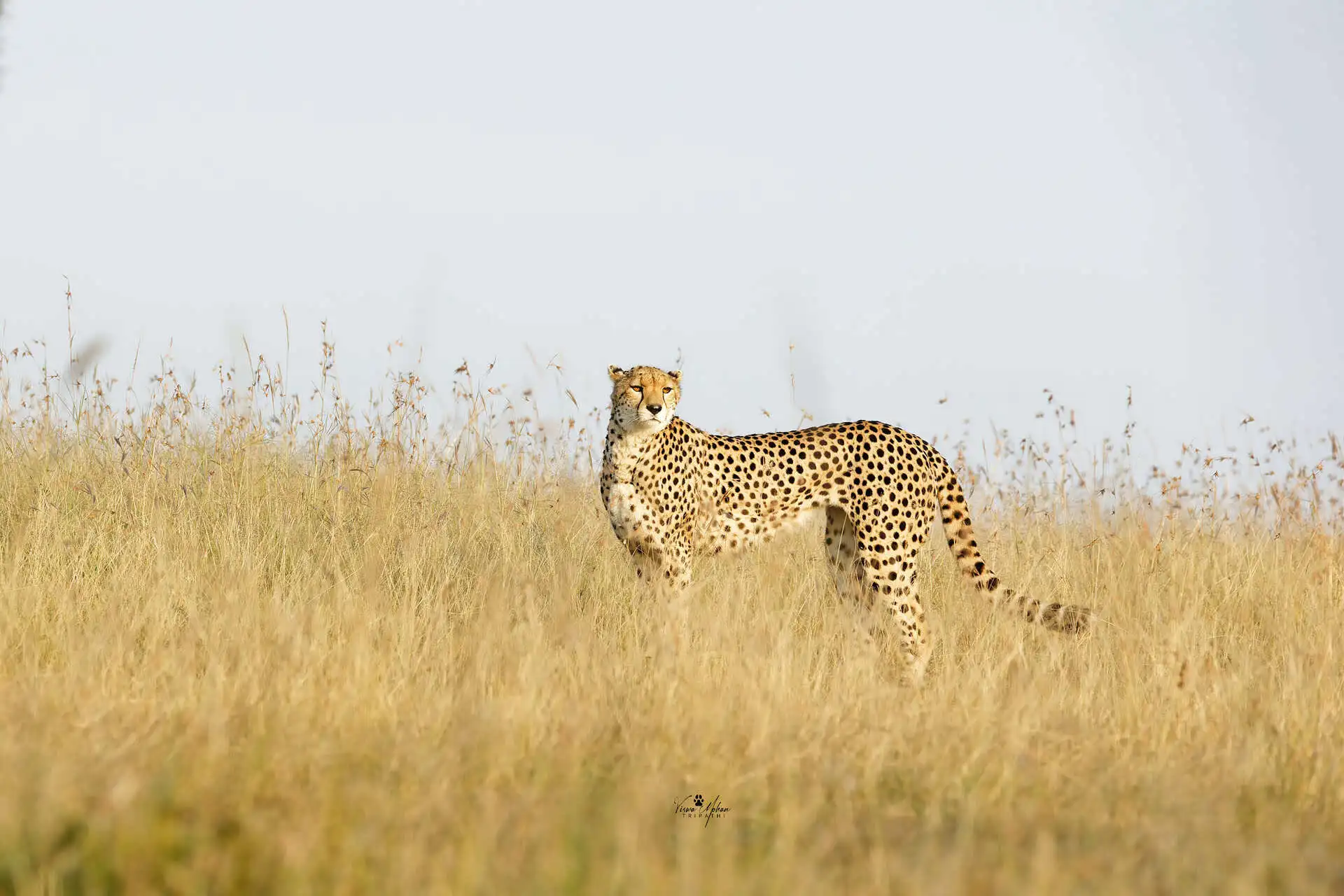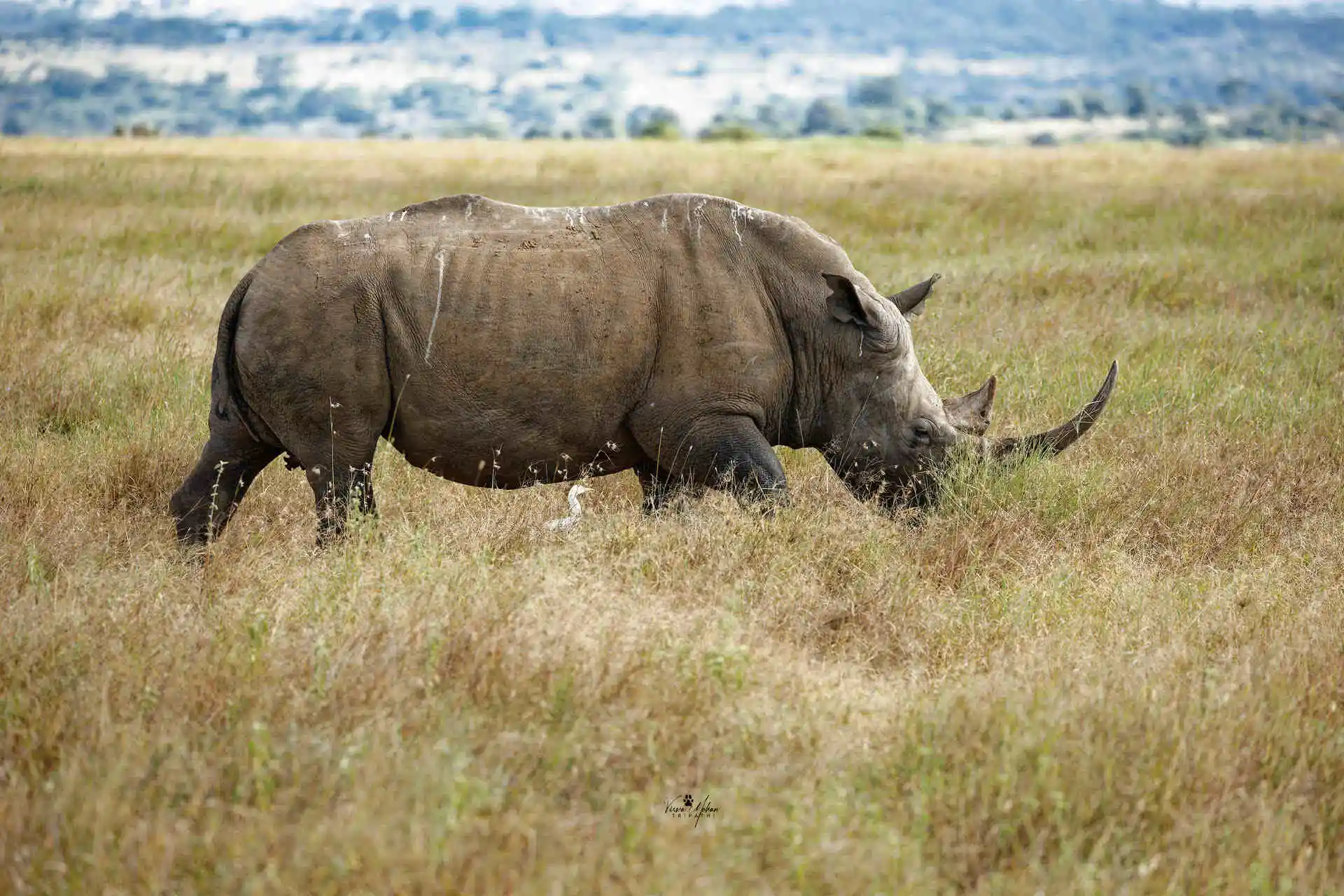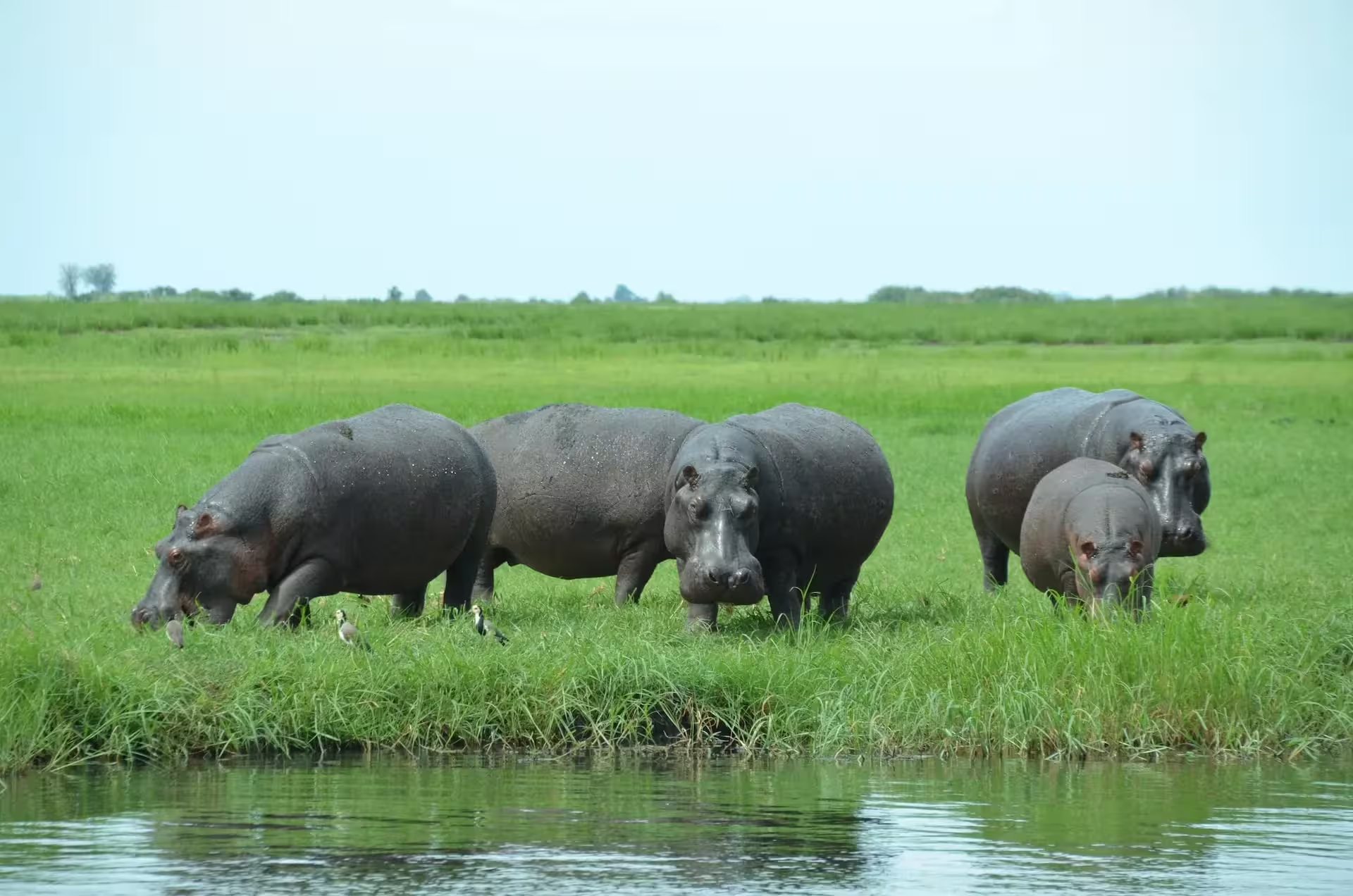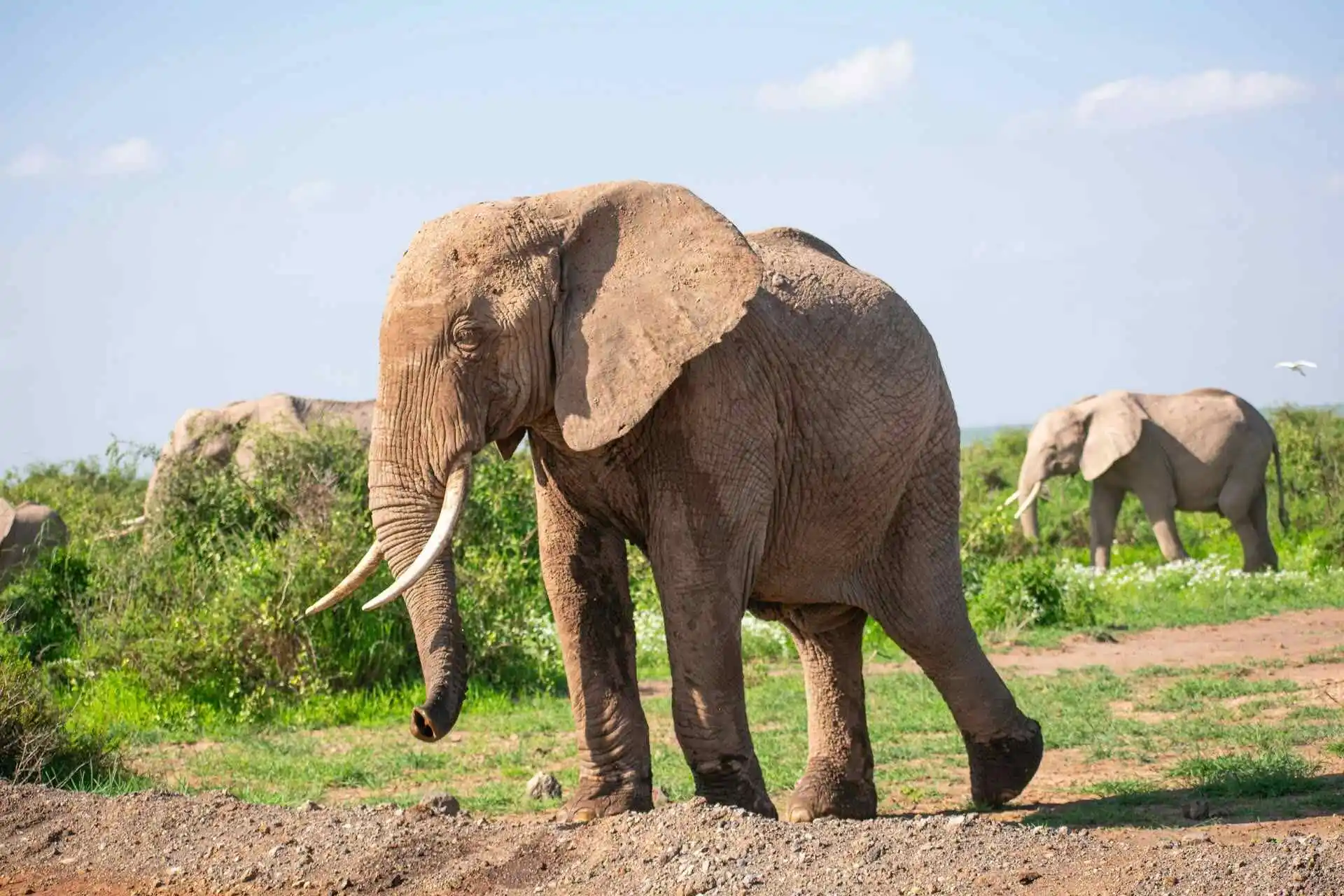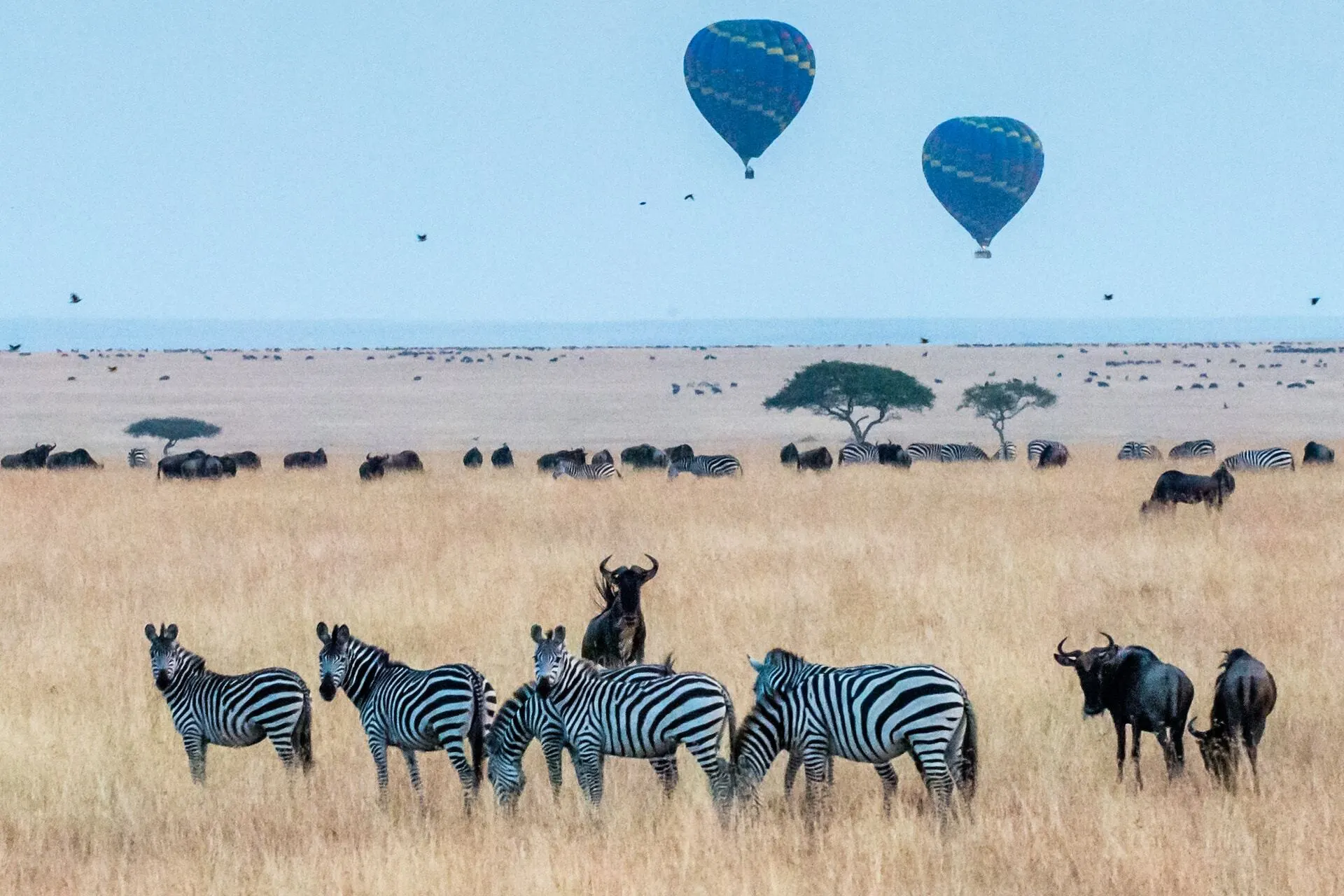How Does an African Warthog Look?
African warthogs may not look graceful, but they’re made for tough life in the wild. They have strong, sturdy bodies, flat faces, and those famous curved tusks that help them dig and defend themselves.
The bumps on their faces aren’t real warts they’re thick skin patches that protect them during fights.
Warthogs also have short, upright manes that stand up like mohawks. When they walk or run, they raise their tails like little flags, which helps them stay together in tall grass. It’s both funny and useful!
What Do Warthogs Eat?
Warthogs mostly eat grasses, roots, bulbs, berries, and sometimes even insects. They love digging up food with their snouts and tusks. You’ll often see them kneeling on their front legs while grazing, using the thick pads on their knees for support.
When food is hard to find, they won’t hesitate to eat things like bones or even animal droppings to get extra nutrients. They’re not picky, they’re just smart survivors.

Key Characteristics Table
| Characteristics | Description |
|---|---|
| Scientific Name | Phacochoerus africanus (Common Warthog) |
| Common Name(s) | Warthog, Common Warthog |
| Conservation Status | Least Concern (IUCN Red List for Common Warthog) |
| Habitat | Savannas, grasslands, and open woodlands in Sub-Saharan Africa. |
| Diet | Omnivorous; primarily grazes on grasses, roots, and bulbs, also insects and carrion. |
| Social Structure | Females live in family groups (sounders); males are solitary or in bachelor groups. |
| Weight | Males: 60 - 150 kg (130 - 330 lbs) Females: 45 - 75 kg (99 - 165 lbs) |
| Shoulder Height | 63.5 - 85 cm (25 - 33.5 inches) |
| Body Length | 0.9 - 1.5 meters (3 - 5 feet) excluding tail |
| Tail Length | 35 - 50 cm (14 - 20 inches), slender with a tuft of bristles at the end, held upright when running. |
| Lifespan | Wild: 12 - 15 years (up to 18 years reported) Captivity: Up to 20 years |
Why Are Warthogs Important?
Warthogs play a big role in keeping the ecosystem healthy. When they dig for food, they turn and loosen the soil, which helps plants grow better. Their digging also creates small holes where rainwater can collect, supporting more life in dry areas.
They are also a key food source for many predators like lions, leopards, hyenas, and wild dogs. This helps keep the natural food chain in balance.
Warthogs often use old burrows for shelter, and when they move out, other animals like mongooses and porcupines move in. In this way, warthogs help provide homes for many other creatures.
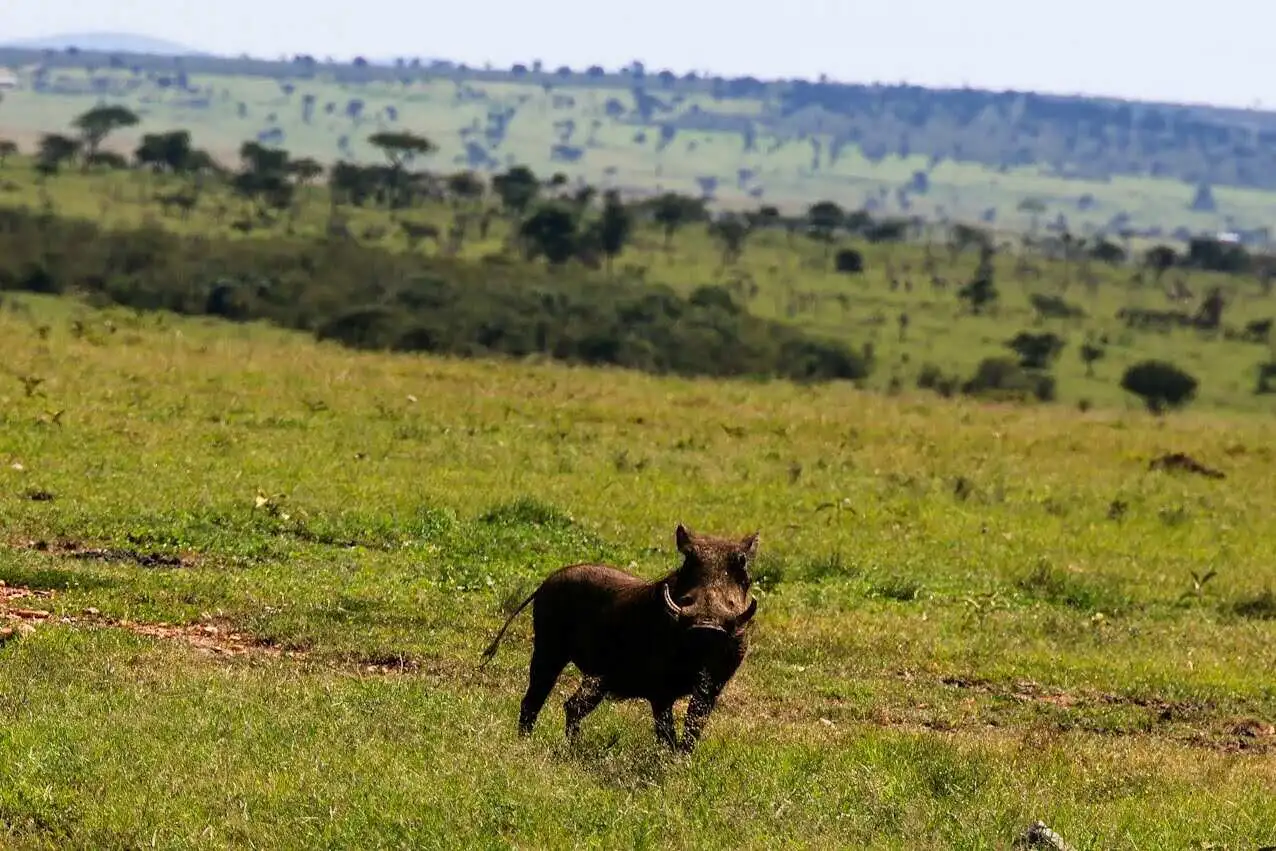
Predators and Defense Mechanisms
Warthogs have many enemies in the wild. Lions, leopards, cheetahs, hyenas, wild dogs, and crocodiles often hunt them. Young piglets are especially at risk, and large birds like eagles may snatch them if they wander too far from their mothers.
Still, warthogs are not easy prey. They depend on their speed, sharp senses, and quick thinking to survive. When danger is near, they run fast in a zigzag path to throw off their attackers. They can sprint up to 48 kilometers per hour, which helps them escape most chases.
If a burrow is close, they rush into it backward with their tusks facing out. This way, they’re ready to fight off anything that follows. Their tusks may look odd, but they can do real damage. Warthogs also sleep in old burrows, which keeps them safe from night-time predators.
They may look a bit awkward, but warthogs are alert, tough, and built to handle the wild.
Fun Facts About African Warthogs
- Warthogs sleep inside burrows and often back in, so they can charge out with their tusks if danger comes close.
- They kneel down while eating, using their tough, padded knees like natural guards.
- Even with sharp tusks, they prefer to run away from trouble, fast and in a zigzag path.
- Female warthogs can give milk to as many as eight piglets, though they usually raise two to four.
- They don’t dig their own burrows but smartly reuse ones left behind by aardvarks.
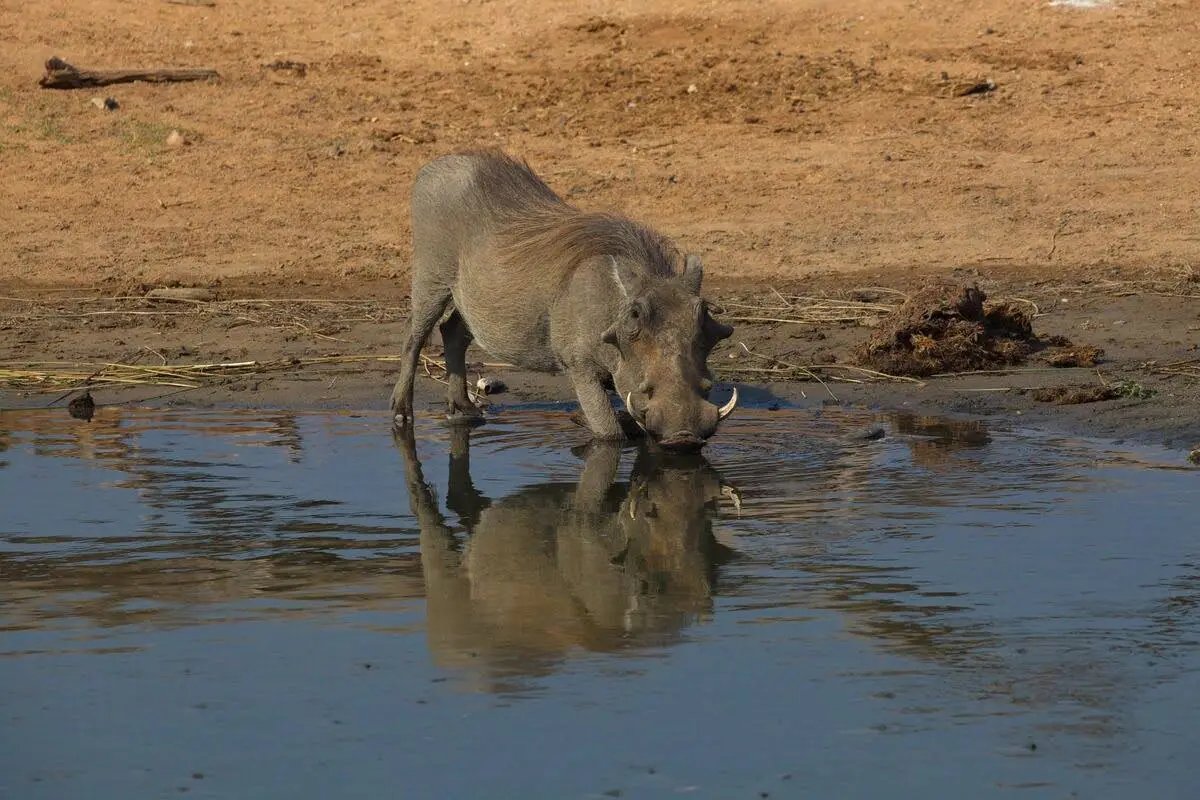
Top National Parks to See African Warthogs
Warthogs are easy to spot in many parks across Africa. They roam freely in open spaces and often appear near water or roads. Some of the best places to see them include:
- Masai Mara, Kenya – You’ll often see warthogs grazing in the open grasslands.
- Serengeti National Park, Tanzania – Watch for them trotting across the plains or gathering near waterholes.
- Kruger National Park, South Africa – They show up often, especially near roads, picnic spots, and rest camps.
- Etosha National Park, Namibia – The open terrain makes it easy to spot warthogs, especially around the dry pans.
- Chobe National Park, Botswana – Warthogs are common near rivers and grasslands, often sharing space with elephants and buffaloes.
Wherever you go on safari, keep an eye out. These funny little runners with their tails held high always bring a smile when they appear!


